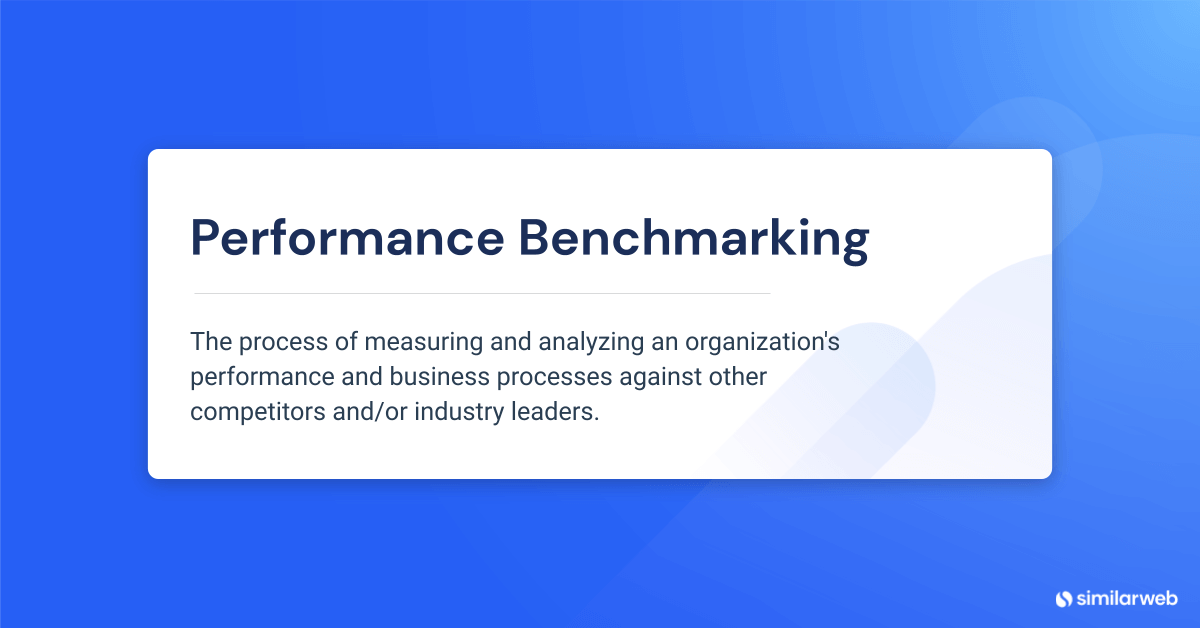Performance Benchmarking: A Beginner’s Guide

Benchmarks are a second language if you’re in charge of business or revenue management. Indeed, every business leader knows that you can’t improve without a baseline or goal – but how do you come up with those goals?
Performance benchmarking is the gold standard of all types of benchmarking because it gets right to the point. It doesn’t care about your business history, story, or sentiments. Instead, it gives you the bottom line. Performance benchmarking tells you where you should be. But what are performance benchmarks, exactly?
Today we’ll cover everything you need to know about performance benchmarking, including:
-
- The performance benchmarking definition
- How to create performance benchmarks
- Performance benchmarking examples
The end goal? Consistent improvement and business growth.
What is performance benchmarking?
Benchmarking is all about comparisons. As the name suggests, performance benchmarking measures your company’s performance and compares it to others in your industry. Specifically, you’ll consider your performance in:
- Sales
- Products
- Services
- Customer Service
- Expansion or Growth
Now, how do you measure your business’ performance? Key Performance Indicators (KPIs) are your first step. These are metrics that indicate progress in a particular business area. There are hundreds of KPIs out there. Some examples include growth in revenue, gross profit margin, number of customers retained, monthly website traffic, number of blog articles published in a month, etc.
5 Examples of performance benchmarking
1. Customer service performance benchmarking
How do you measure your performance in customer service? You might consider using a net promoter score.
Businesses ask customers how their experience was at every step of the customer journey – upon a purchase, after a customer service interaction, etc. A net promoter score tells you how likely a customer is to recommend your business from 0 to 10. The score falls between -100 to 100.
Anyone who answers between 0 to 6 is a detractor, who might spread negative feedback about your brand. Passives answer 7 to 8, while promoters answer 9 to 10. To calculate your NPS, subtract the percentage of detractors from the percentage of promoters.
Now, is your NPS KPI consistent or close to your historical trends? Has it dropped? Does it feel comparable to your competitors? This is where the benchmarking of the performance comes in.
Once you have a baseline, it becomes your standard. Your basic goal is to meet that standard (benchmark), but you can continue to raise that benchmark and exceed your customers expectations. You’d treat other performance benchmarks similarly, reviewing them and consistently trying to build them up.
2. Product performance benchmarking
One popular KPI for performance benchmarking is cost per unit. Essentially, this is how much every unit or product cost for you to create. You’ll add both fixed and variable expenses and divide it by your total number of products made to get this number.
Compare it with your profits or retail price. Are you making enough to propel your business forward? If not, try to improve your budget activity to get the cost lower, without sacrificing quality. Once you achieve the perfect balance, that’s your performance benchmark.
3. Business efficiency performance benchmarking
Your business processes are the wizards behind the curtain helping you sell your products and services. But how long do they take to work their magic? Here’s a performance benchmark you might use to find out: time to market.
In business, time is money. You can take months to create the perfect product, only for it to mean nothing in the face of big production and labor costs that eat into your profits. Time to market is the period of time between your product’s conception to its first day available on the market.
Compare your time to market with similar competitor products. Find ways to hone it to an agreeable timeline. After that, you can use performance benchmarking to improve your delivery time (of course, without sacrificing quality).
4. Sales performance benchmarking
Sales performance benchmarking is something all businesses should be examining on a regular basis. It helps organizations identify where they are over-and underperforming in the current market, and quantifies opportunities your team may have overwise missed out on spotting.
If your business gleans that certain products have been declining in sales, while the competition is seeing an uptick, your team can then put a remedy plan in place to improve sales performance. Sales performance benchmarking is all about reducing the risk of missing sales targets and improving the chances of consistently hitting sales goals.
By looking to see how your rivals’ sales are doing, you can also take notes on what’s working best for them and implement new and improved sales strategies.
5. SEO performance benchmarking
There are a ton of different KPIs you can look at to benchmark how your SEO is performing, including:
- Keyword rankings
- Organic traffic
- Backlinks
- Bounce rate
- Average session duration
- Search traffic by engines
- Paid search
Using Similarweb’s Competitive Analysis module, you can gather data on all these KPIs with just the click of a button.
Find out which keywords bring in the most traffic to your competitor’s sites, and adapt your content accordingly. The Keyword Gap Analysis tool is also useful for SEO performance benchmarking, so you can see exactly where your site has the opportunity to improve — plus, celebrate the wins you already have in your niche (which is also important!).
How’s your business performing?
Performance benchmarking is a strategy every business should perform regularly. Considering that there are endless benchmarks to examine, try to choose a select few performance benchmarks that are most important to your business, and benchmark those most often — perhaps monthly or quarterly. Others you may decide to examine only once every 6 months, or even just once a year. Schedule them in your team’s calendar throughout the year so you don’t forget! The more you benchmark, the better you and your team will get at optimizing your processes, whether it’s SEO, customer service, or anything in between. The end result? Better business practices, happier users, and continual growth over time.
To benchmark your digital performance, check out Similarweb’s Benchmarking Suite.
Benchmark like a boss with fresh competitive data
Contact us to set up a call with a market research specialist










